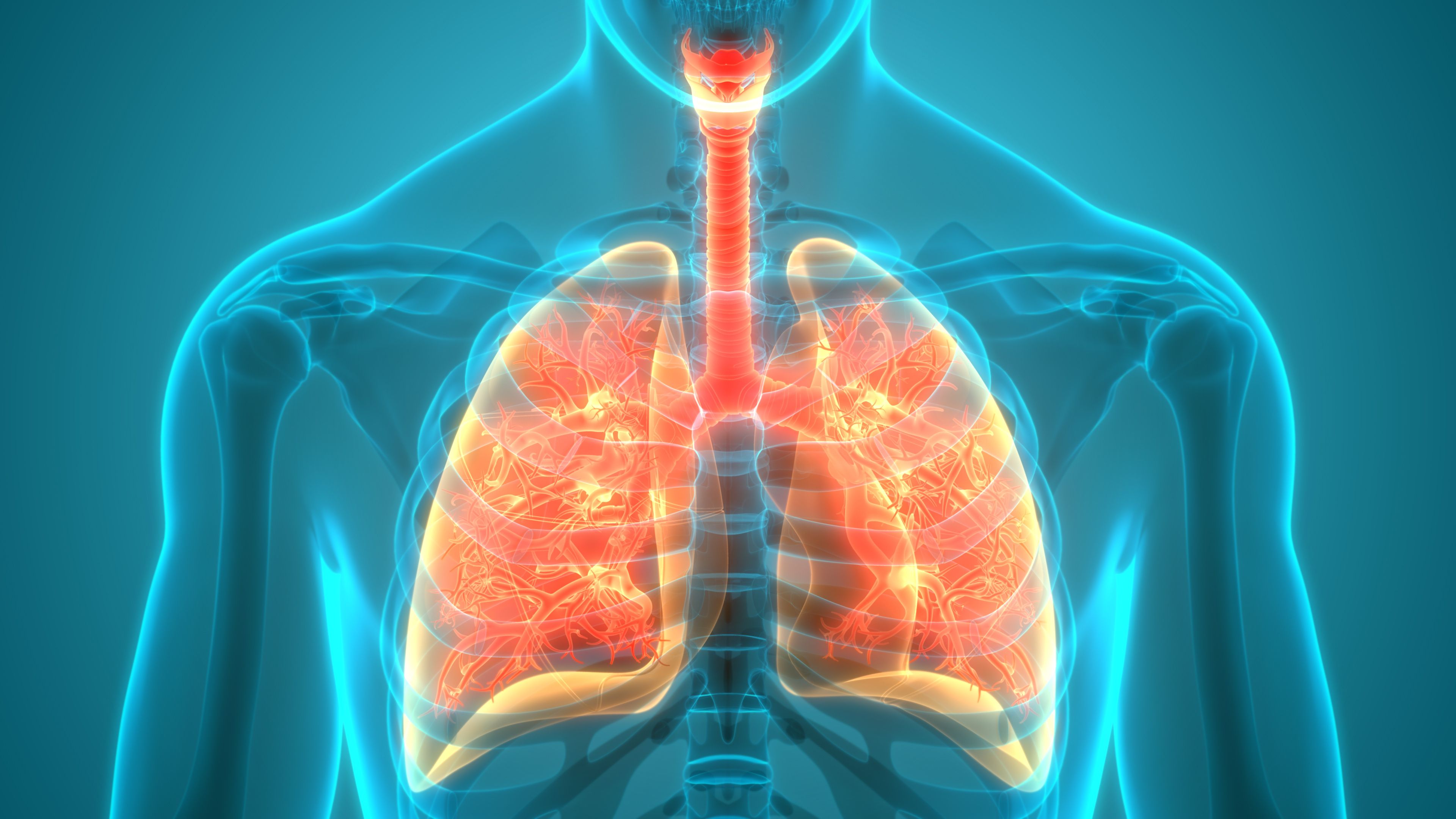High BMI Negatively Impacts Survival Outcomes With Osimertinib in EGFR+ NSCLC
In a retrospective analysis of patients with advanced non–small cell lung cancer and EGFR mutations treated with osimertinib, investigators found that body mass index of 25 kg/mq2 or more had a negative impact on survival outcomes.

In a retrospective analysis of patients with advanced non–small cell lung cancer (NSCLC) and EGFR mutations treated with osimertinib (Tagrisso), investigators found that body mass index (BMI) of 25 kg/mq2 or more had a negative impact on survival outcomes.1
The single-center study was performed in Bologna, Italy, and published as an abstract at the 2021 American Society of Clinical Oncology Annual Meeting. It investigated the standard of care in patients with EGFR tyrosine kinase inhibitor (TKI) naïve disease and in those with an EGFR T790M mutation who had progressed following a prior EGFR TKI. Previously, there have been no clear data supporting the relationship between BMI and the efficacy of osimertinib.
From February 2016 to December 2020, 37 patients with advanced EGFR-mutated NSCLC who received osimertinib as second or later line therapy were examined for survival outcomes according to BMI. They were split into either the BMI-high group of 25 kg/mq2 or more and a BMI-low group of less than 25 kg/mq2.
After a median follow-up for this study was 32.5 months (IQR, 13.35-42.06), there was a median overall survival (OS) of 29.9 months (95% CI, 18.2–not reached [NR]) for the whole group. Overall, the median progression-free survival (PFS) was 17.5 months for all patients (95% CI, 15.7-33.3).
There were 25 patients in the BMI-low group and 12 patients in the BMI-high group. In the BMI-low, median PFS was 21.0 months (95% CI, 16.8-NR) and in the BMI-high group, it was 16.8 months (95% CI, 4.4-NR; P = .03). Median OS was 29.9 months (95% CI, 20.8-NR) and 18.2 months (95% CI, 11.7-NR) for the BMI low and BMI-high groups, respectively (P = .01).
Having BMI of 25 kg/mq2 or more was constituted as an independent risk factor for mortality at multivariate analysis, with a hazard ratio of 3.99 (95% CI, 1.2-13.2; P = .02). Other risk factors included age and number of metastatic sites. There was a non-significant tendency to progression in the BMI-high group at the same multivariate analysis, with a hazard ratio of 2.76 (95% CI, 0.9-8.3; P = .06).
The mean age in this study was 63.5 years (range, 34-83 years), and 65% of patients were women. Former or never smokers made up 59% and 67% had 3 or more metastatic sites at the start of treatment.
In 2019, a separate retrospective trial looked at low BMI as an independent prognostic in patients with NSCLC who were treated with an EGFR TKI.2 These investigators found that pretreatment of patients with underweight BMI, or BMI of less than 18.5 kg/mq2, was a significant prognostic factor for poor PFS and OS of EGFR TKI treatment. The median PFS was 9.1 versus 14.8 months for those with underweight BMI (n = 33) and those with BMI of 18.5 kg/mq2 or more (n = 134), respectively (HR, 1.72; 95% CI, 1.11-2.67; P = .03). The median OS was 26.0 compared with 32.3 months (HR, 1.70; 95% CI, 1.03-2.81; P = .02).
“In our experience, a BMI ≥25 kg/mq2 negatively influenced survival outcomes of 2nd-line osimertinib' treated NSCLC patients. More comprehensive studies are warranted to confirm these findings,” the investigators of the osimertinib analysis wrote in their conclusion.1
Reference:
1. De Giglio A, Di Federico A, Donati G, et al. The prognostic role of body-mass index (BMI) for advanced EGFR positive non-small cell lung cancer (NSCLC) patients treated with osimertinib. J Clin Oncol. 2021;39(suppl 15):e21078. doi:10.1200/JCO.2021.39.15_suppl.e21078
2. Minami S, Ihara S, Nishimatsu K, Komuta K. Low body mass index is an independent prognostic factor in patients with non-small cell lung cancer treated with epidermal growth factor receptor tyrosine kinase inhibitor. World J Oncol. 2019;10(6):187-198. doi:10.14740/wjon1244
Kim Evaluates New Regimens for EGFR+ Lung Cancer
January 20th 2025During a Community Case Forum event in partnership with the Medical Oncology Association of Southern California, Edward S. Kim, MD, MBA, discussed the FLAURA2 and MARIPOSA trials of newer regimens for EGFR-positive lung cancer.
Read More
Amivantamab/Lazertinib Maintains OS Benefit in EGFR+ NSCLC
January 15th 2025During a Case-Based Roundtable® event, Joshua K. Sabari, MD, continued discussion of key outcomes from the MARIPOSA trial and toxicity management in patients with EGFR-mutated non–small cell lung cancer in the second article of a 2-part series.
Read More